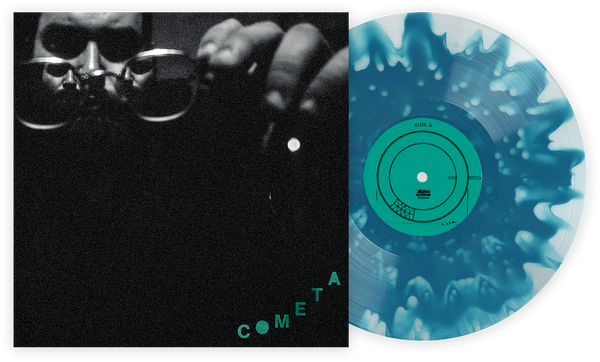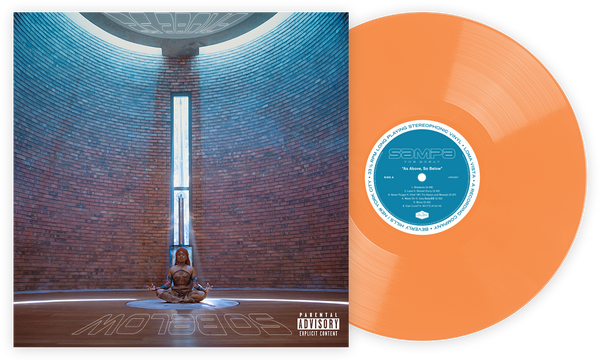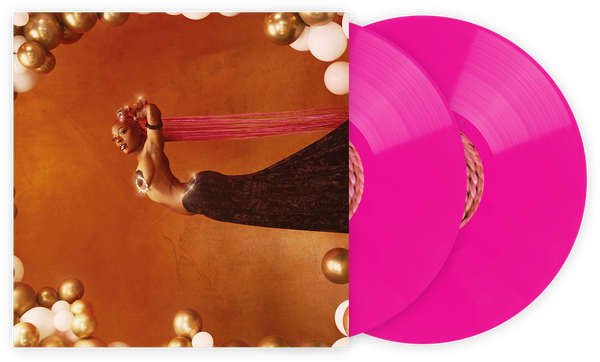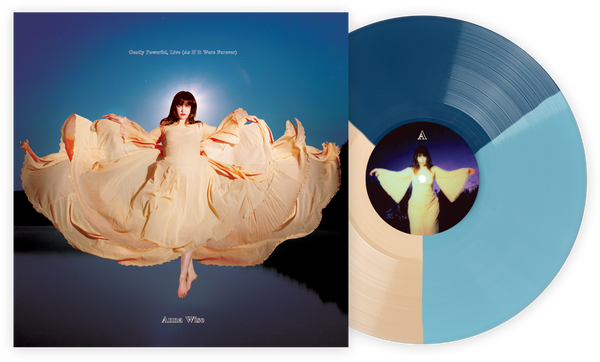The 10 Best Thelonious Monk Albums to Own on Vinyl
Like any jazz legend with a pretty lengthy career, Thelonious Monk’s catalogue is absolutely brimming with rock-solid choices for listeners of all kinds. Want something relatively easy to digest and straightforward? He’s got you. How about a record where he gets kind of out there and practices minimal restraint? No problem. What about something where, yes, the music is fantastic but the cover art is also awesome? Oh shit has Monk ever got you covered.
If I was educated enough as a jazz listener and not just a pleb who unabashedly loves the genre, I’d go on as long as my editors would let me about Monk and the best albums in his discography. But for me, until I decide to go back to school and take music theory classes (not happening!), it’s all about the feel. And this storied piano player, composer and band leader had me hooked from the first time I heard Brilliant Corners and took a deep dive into his work. As for that smart-guy stuff, well, Ryan’s got you covered there in the following graf. Ryan, you got it from here.
(Ryan grabs the keyboard)
Thelonious Monk was a pivotal figure in the history of jazz, using dissonance as an asset rather than a mistake. His compositions and playing style are uniquely his and his alone. Though often imitated, no one has ever come close to matching what he was pulling off 70 years ago! Throughout his recorded career, he can be heard playing solo piano, with small combos and with big bands and orchestras. No matter what is happening around him, the music always has a specifically unique Monk-ness to it.
Let’s do this.

Genius Of Modern Music Volume One + Two
AM: I may contradict this point a bit in covering the next album on this list, but, honestly, there are few better ways to get into Monk’s work than these two volumes of Genius Of Modern Music. As Ryan points out, it’s straight-up craziness that these are the first recordings of Monk, given that they’re essentially all his greatest hits. From “Round About Midnight” to “Ruby, My Dear,” it’s all here and it’s all fantastic. And while you’ll definitely hear these tunes on later records, you won’t hear them like this. They’re all far shorter and less experimental, making for a far more digestible introduction to the man with the perfect hat collection.
RK: It is mind blowing that these are Monk’s first recordings as a leader. Some of his best known compositions are represented and his signature playing style is almost fully formed. To have such an original writing and playing style so early in a career is very rare. Many great musicians grace these pressings, lending their talents to various-sized groupings and arranged material. Milt Jackson is featured on a number of tracks on Volume Two, creating a counterpoint to the piano with his vibraphone. With the amount of material covered, these albums almost feel like a “greatest hits,” which is insane for a first recording. Just as was intended when first released, this recording is a perfect introduction to the master that is Monk.

Thelonious Monk Trio
AM: I’m a bit biased here because Thelonious Monk Trio was my first Monk record, so bear with me here: Goddamn, this is about as perfect as it gets. Just look at that cover art, all abstract and playful with its coloring. And then throw the damn thing onto your turntable and, ah, instant musical delight. What’s particularly rad about this album is that it’s pieced together from several different recording sessions, meaning you get to hear Monk play with cats like Max Roach and Art Blakey, but you don’t really notice. Instead, it’s all about listening to the way that Monk leads his trio through his classics, including the almighty “Bemsha Swing” and “Little Rootie Tootie.” It’s like sitting in on a jam session that actually goes somewhere (no shots).
RK: There is a point during Monk’s solo in “Little Rootie Tootie,” around 2:10 seconds in, that highlights the brilliance showcased throughout the album. Monk flutters on two notes, then resolves it, does it again, and then hits a fantastic run that transitions perfectly to the B section. The trio swings with such ease through the compositions that it would be easy with a cursory listen to disregard the complexity. How does one even begin to write a tune like “Trinkle, Tinkle”—let alone have a group play it with conviction and mastery. This record is not just one of the best Monk albums to own, but one of the best piano trio albums of all time.

Monk’s Music
AM: As a massive John Coltrane fan, there are few things flat-out cooler than hearing Monk shout “Coltrane! Coltrane!” before the sax-man takes his solo on the Monk’s Music gem “Well, You Needn’t.” The way the track swells into and out of itself is fascinating in its own right, but there’s something about that vocal interaction being caught on record that just feels… perfect. Speaking of perfect, can we once again talk about Monk’s choices for artwork? I don’t give a damn if you like jazz or not, because you’re a monster if you don’t love seeing this man hunched over in a little red wagon, holding a xylophone. Maybe it’s a nod to the playfulness of the music on here, maybe it’s just Monk being the oddball he was. Either way, it’s awesome.
RK: Art Blakey is one of the greatest jazz drummers of all time and tunes like “Epistrophy” showcase why. During the first head, he pushes and pulls at the beat with the hi-hat all while having the presence of mind to know when to kick back into the groove. Coltrane is featured prominently as well, applying his distinctive sound to Monk’s tunes. Soloing over some of these changes can be complicated, many times the chords move in half steps (“Well You Needn’t” and “Epistrophy”), but the septet here seems to have no trouble. The musicians are able to weave their messages to fit within the complex context and deliver an album worth listening to again and again.

Brilliant Corners
AM: Wait, didn’t we already write about this album? Sure, but it more than deserves its spot here. Brilliant Corners is pretty much the Monk record for anyone interested in diving into his rather-massive catalogue. For one, it features some truly killer album art that inspires feelings of pure joy anytime you glance at it—look how happy he is! And then there are the tunes… my god, the tunes. “Bemsha Swing” may just be one of my favorite compositions of all time—funny enough, it makes several appearances throughout this list—while “Pannonica” is a stirring, dreamy revelation. There’s just so much to love about this album, which will no doubt grab you as soon as the opening track, “Brilliant Corners,” stumbles with a swagger out of your speakers.
RK: In the liner notes for Brilliant Corners, Monk is quoted as saying, “I’ve never been satisfied with one of my recordings yet.” It must have been this unease that drove him to push and experiment, which resulted in a near-perfect album. Much has been documented about the complexity of the title track, but through listening, it is clear that it wasn’t written just to be complicated. The difficulty is just a byproduct of the way that the melody and chords naturally sit. It is hard to imagine the kind of musicianship that could bring these tunes to life in 1956. Then you realize that the rhythm section is Max Roach and Oscar Pettiford, and it all makes sense.

Misterioso
AM: Named specifically for Monk and his left-field antics, Misterioso captures him and his Quartet tearing through more than a handful of tunes at the Five Spot Cafe in New York. I could go on about the other tracks on here, but I’d like to be more succinct (if I may). This record’s live rendition of “In Walked Bud” is simply astounding, and it for real left me in a daze during my first listen. Johnny Griffin rips his saxophone so hard that you’ll think he’s from another planet. Or you’ll declare it your favorite five minutes of recording music ever like a certain monolith of music criticism. Whatever the case, you need this album in your collection for “In Walked Bud” alone. The rest is just uber-delicious frosting on a stupid-good jazz cake.
RK: This is a great introduction to Monk’s live albums and their variation with studio work. His quartet had a six-month residency at a New York club and this was recorded in front of a live audience. The band is able to stretch out a bit and really develop their solos. The extended time of their residency translates into relaxed and comfortable playing. It is interesting to hear Johnny Griffin’s take on the tunes. His use of bop language applied to Monk’s madness yields some great results. Comparing Griffin’s playing to later recordings with Charlie Rouse and his approach makes for great listening.

Orchestra at Town Hall
AM: Despite the fact that he’s playing in a live setting with a freakin’ orchestra, Monk and his keys are at center stage throughout this LP. It was recorded at the Town Hall in New York City in 1959, and if you allow yourself to enter the right mind state, it can feel like you’re sitting front row and watching it all unfold. What’d you see is a man possessed by his music, particularly when delivering what has to be the quintessential performance of “Little Rootie Tootie.” The preceding cut, “Monk’s Mood,” is equally effective as Monk steers the ship amidst varying solos from his players (which included a then-rising Donald Byrd on trumpet!).
RK: If you couldn’t get enough of that piano solo on “Little Rootie Tootie” from the trio record and wanted to hear it arranged for a large ensemble, this is the recording for you. Hal Overton took Monk’s tunes and expanded them with gorgeous arrangements for a full horn section. Amid all the blazing solos, counterpoint and musical interaction, the tunes themselves take starring role. The reason Monk’s music endures to this day is that his writing is so unique and thoroughly enjoyable. Through all the layers of sound, this recording still sounds like an extension of one man.

Monk’s Dream
AM: Historically speaking, Monk’s Dream is particularly important because it marks his first release for Columbia Records with his Quartet. Musically speaking, well, you know you’re in for a great listening experience when the opening track immediately grabs you, and many Monk albums definitely hit that mark. But there’s something extra special about the introductory keys of the title that resonate more than most. Also, while the album features cuts from more than a decade old—meaning, you could hear them elsewhere—they’re nothing like those originals. Monk and his latest batch of players take “Monk’s Dream” and “Bye-Ya” to another planet (and a swingin’ one at that), thanks in part to the added brass from saxophonist Charlie Rouse.
RK: The way that the tracks are ordered on this album creates a flow and feeling that just feels right. From swinging quartet to solo piano, Monk’s Dream has everything you could want in an album. The version of “Body and Soul” presented on this LP stands out. The stride in left hand complementing the complete independence and looseness of the right. The way that Monk can take a well-known standard and make it instantly recognizable as his own is not something many others have ever been able to do. The quartet on this album is in top form. John Ore and Frankie Dunlop swing with such momentum that Monk and Charlie Rouse are able to rip some of the freshest solos on record.

Big Band and Quartet in Concert
AM: Somewhat similar to the Orchestra record we pointed out, there’s just something special about hearing Monk’s work brought to life through a bigger sound. In this case, it means a whole lot of added brass to complement his Quartet, which features piano (of course), drums, bass and saxophone. This means favorites such as “I Mean You” and “Four In One” take on an entirely new life, which actually goes beyond the fact that we’re hearing them with more instrumentation. On Big Band and Quartet in Concert, you get to hear these tunes stretched out and reworked in a way that’s familiar and different all at once. Isn’t that what you hope for from a truly great live album, anyway?
RK: This effort seems a little more focused than the Town Hall concert. Hal Overton again did the orchestrations, which are great. In the few years that went by between these two shows, it sounds like some of the techniques of playing Monk’s music were honed. As stated before, this music is tough, and that is stated as a musician in 2017—I can’t imagine what it was like in 1963. Enough time had passed that these musicians were able to figure out how to focus in on the compositions, whether that be through their own trial and error or hearing others working through it on record. Also, Phil Woods, Steve Lacy, Thad Jones—what a lineup!

Solo Monk
AM: It may seem obvious, but it’s worth stating: Solo Monk is your key to getting right down to the core of what makes Monk, well, Monk. It’s just the man and his piano—in addition to a selection of his own tunes and choice standards—and it allows you to hear exactly what is so entrancing about his approach. What you hear on Solo Monk is off-kilter and lively, full of soul and spirit and wholly unique. It’s also emotional, like when you hear “Ruby, My Dear” stripped down and raw, only to be followed up by his taken on “I’m Confessin’ (That I Love You).” Swoon. This record may not be as immediately accessible as the others—like most solo outings featuring a single instrument—but it’s just as important, if not more so. Also, THAT ARTWORK!
RK: In direct contrast with the last album, Solo Monk strips away all but a piano. By removing the rhythm section (which on all previous albums is rock solid), Monk is able to stretch the music to convey his emotions through phrasing. He adds pauses that build anticipation for the next notes. He slows down and speeds up to sculpt tension and release. Listening to this vinyl makes you feel like Monk is in your living room, playing just for you. On many of these tracks, he showcases stride piano, paying homage to piano greats of the past, all while adding his own spin. After listening to all the other albums that feature full ensembles, this LP is a breath of fresh air that will reinvigorate your love of Monk.

Underground
AM: I’ve made note of this throughout this list, but man, Monk seriously has some of the best album artwork, like, ever. In this piece, we see the man of many hats posted up at his piano and dressed as a (fictitious) French Resistance fighter circa World War II. That alone makes picking up a copy of Underground on vinyl all the more crucial, so you can show off that amazing cover! But of course, the purchase wouldn’t be quite as necessary if it didn’t bring along some killer tunes, which include a stunning waltz (“Ugly Beauty”) and a seriously addictive opening number (“Thelonious”). If you don’t catch a buzz off that latter track, that may be a cue for you to check your damn pulse.
RK: Monk’s songwriting was evolving around the time of this album. Tunes like “Boo Boo’s Birthday” and “Green Chimneys” have structures and melodies that sound very modern. It’s almost like they could be cuts off albums from contemporary jazz artists. Monk’s impact is not just one of historical relevance, because he is directly guiding the style and composition for many modern artists. On Underground, Charlie Rouse is the perfect counterweight to Monk. Larry Gales and Ben Riley hit some groovy moments throughout the album, highlighting the piano and sax, but never overtaking them. And like Andrew said, the artwork is wild!
Join the Club!
Join Now, Starting at $44Exclusive 15% Off for Teachers, Students, Military members, Healthcare professionals & First Responders - Get Verified!








